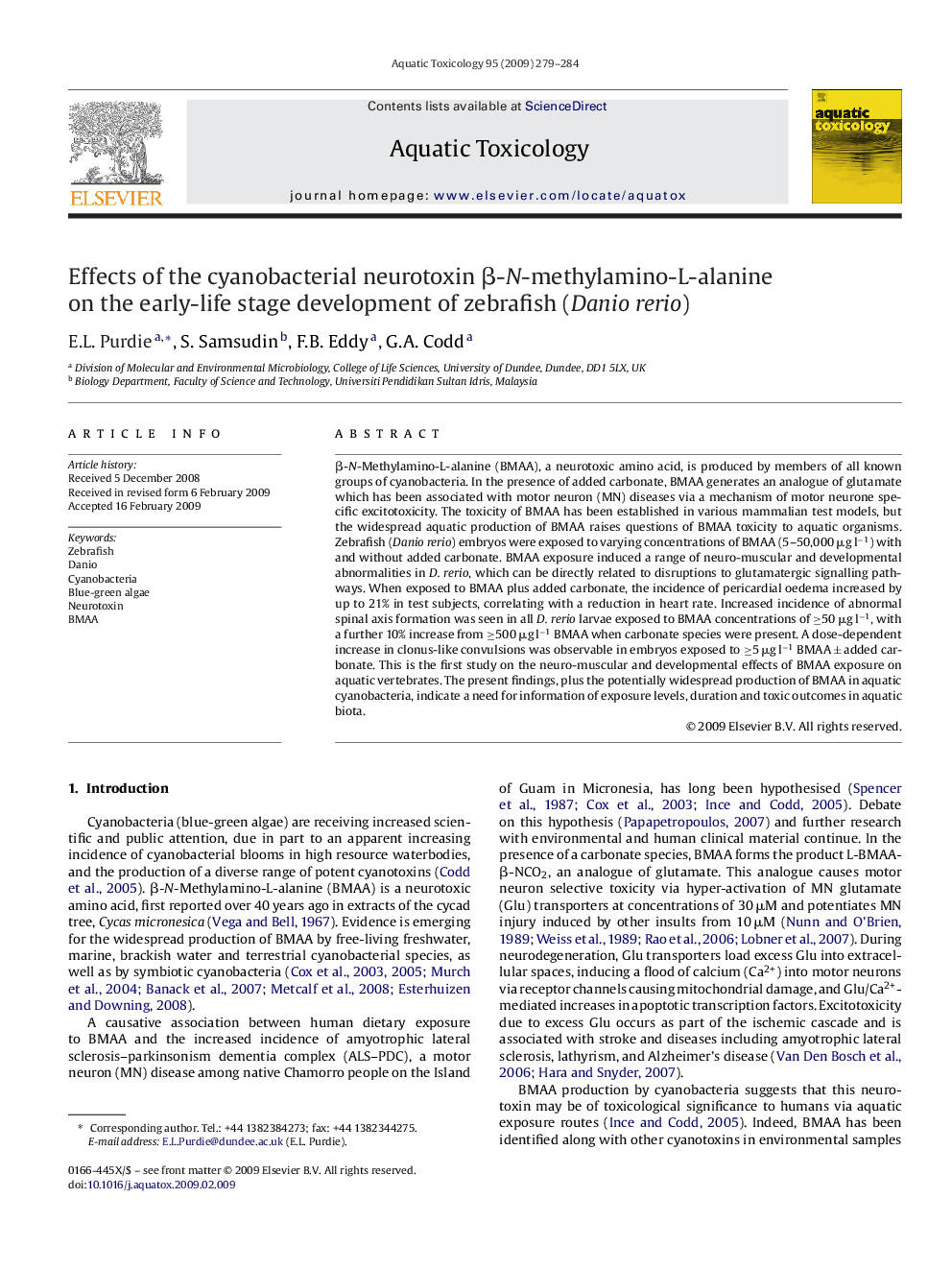| Article ID | Journal | Published Year | Pages | File Type |
|---|---|---|---|---|
| 4530386 | Aquatic Toxicology | 2009 | 6 Pages |
β-N-Methylamino-L-alanine (BMAA), a neurotoxic amino acid, is produced by members of all known groups of cyanobacteria. In the presence of added carbonate, BMAA generates an analogue of glutamate which has been associated with motor neuron (MN) diseases via a mechanism of motor neurone specific excitotoxicity. The toxicity of BMAA has been established in various mammalian test models, but the widespread aquatic production of BMAA raises questions of BMAA toxicity to aquatic organisms. Zebrafish (Danio rerio) embryos were exposed to varying concentrations of BMAA (5–50,000 μg l−1) with and without added carbonate. BMAA exposure induced a range of neuro-muscular and developmental abnormalities in D. rerio, which can be directly related to disruptions to glutamatergic signalling pathways. When exposed to BMAA plus added carbonate, the incidence of pericardial oedema increased by up to 21% in test subjects, correlating with a reduction in heart rate. Increased incidence of abnormal spinal axis formation was seen in all D. rerio larvae exposed to BMAA concentrations of ≥50 μg l−1, with a further 10% increase from ≥500 μg l−1 BMAA when carbonate species were present. A dose-dependent increase in clonus-like convulsions was observable in embryos exposed to ≥5 μg l−1 BMAA ± added carbonate. This is the first study on the neuro-muscular and developmental effects of BMAA exposure on aquatic vertebrates. The present findings, plus the potentially widespread production of BMAA in aquatic cyanobacteria, indicate a need for information of exposure levels, duration and toxic outcomes in aquatic biota.
